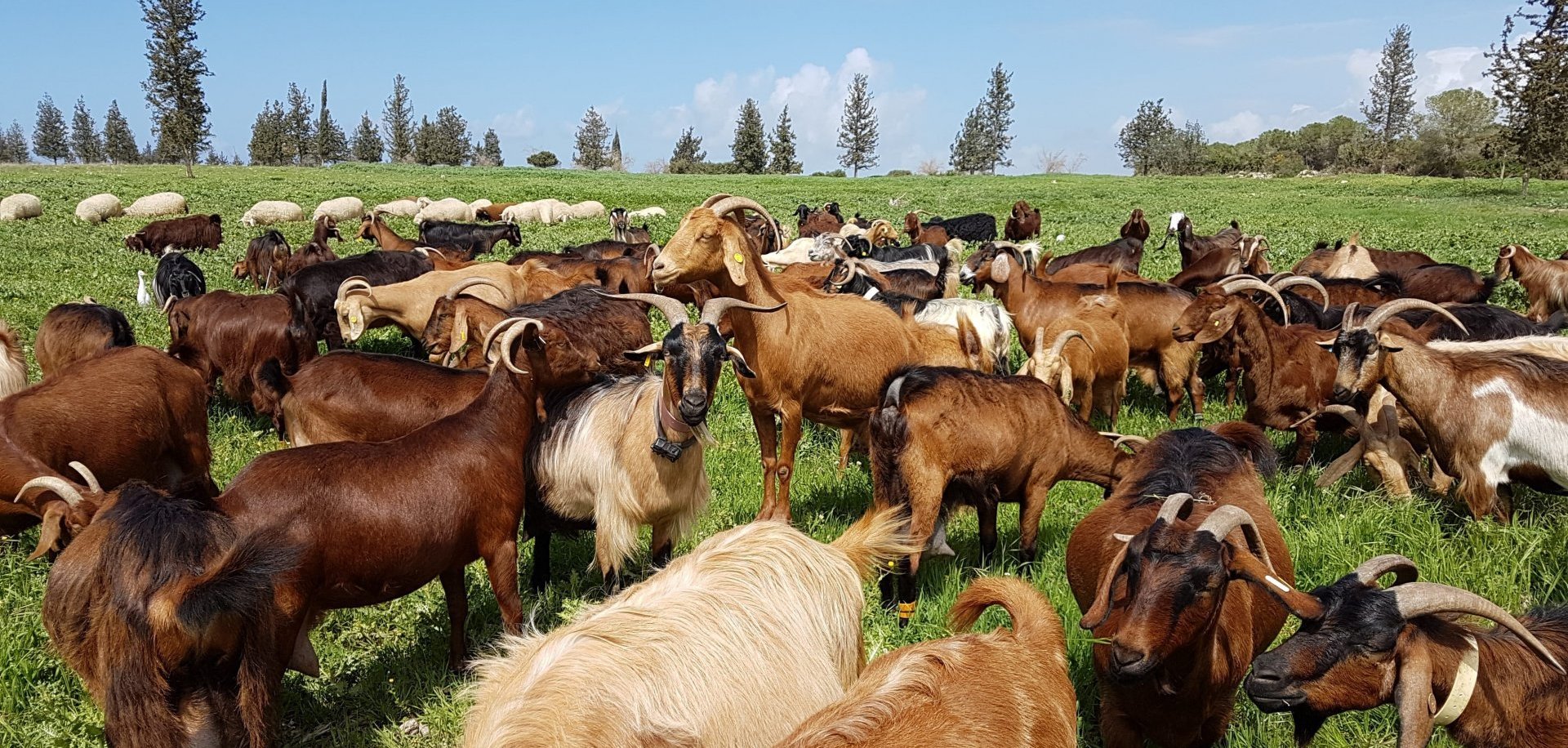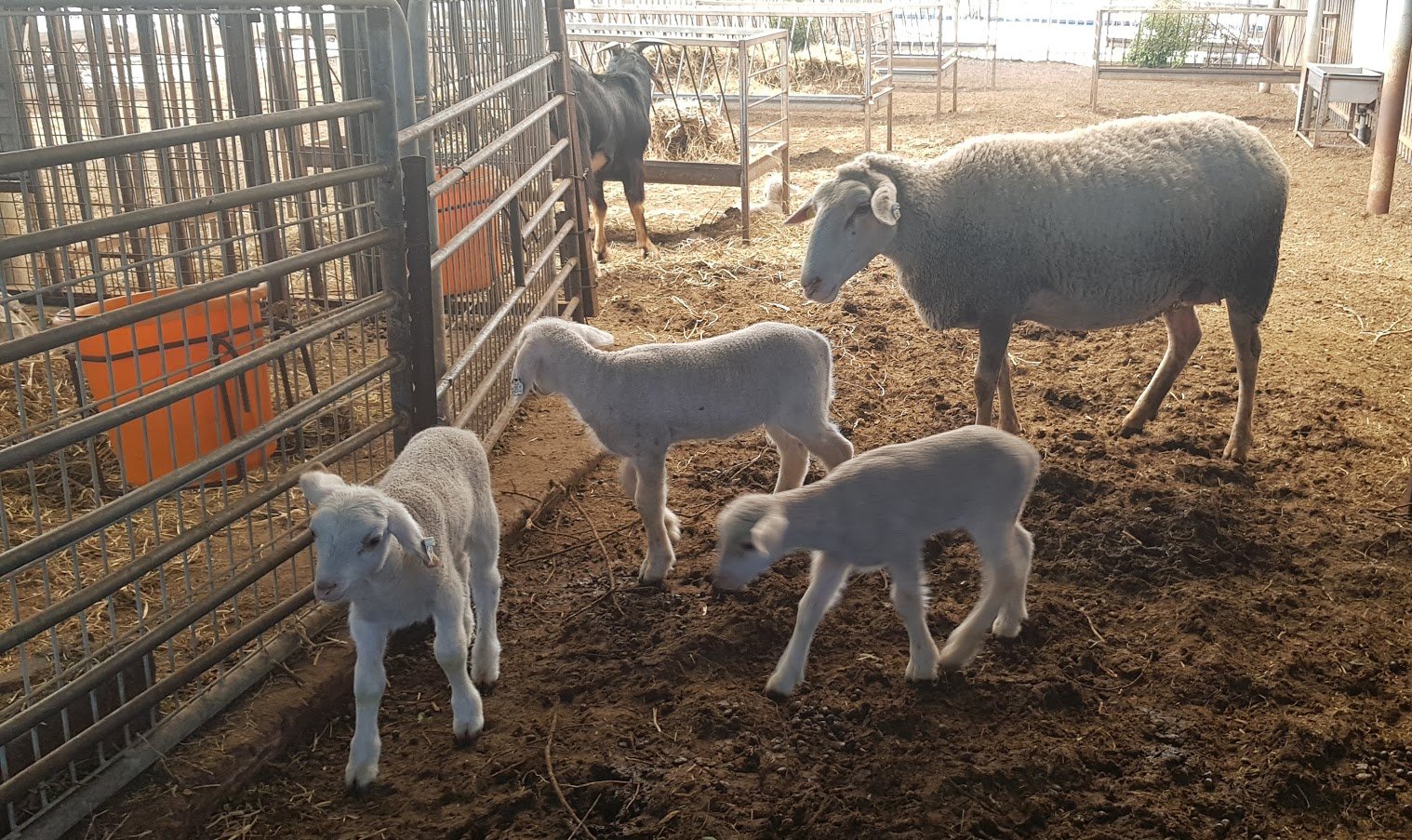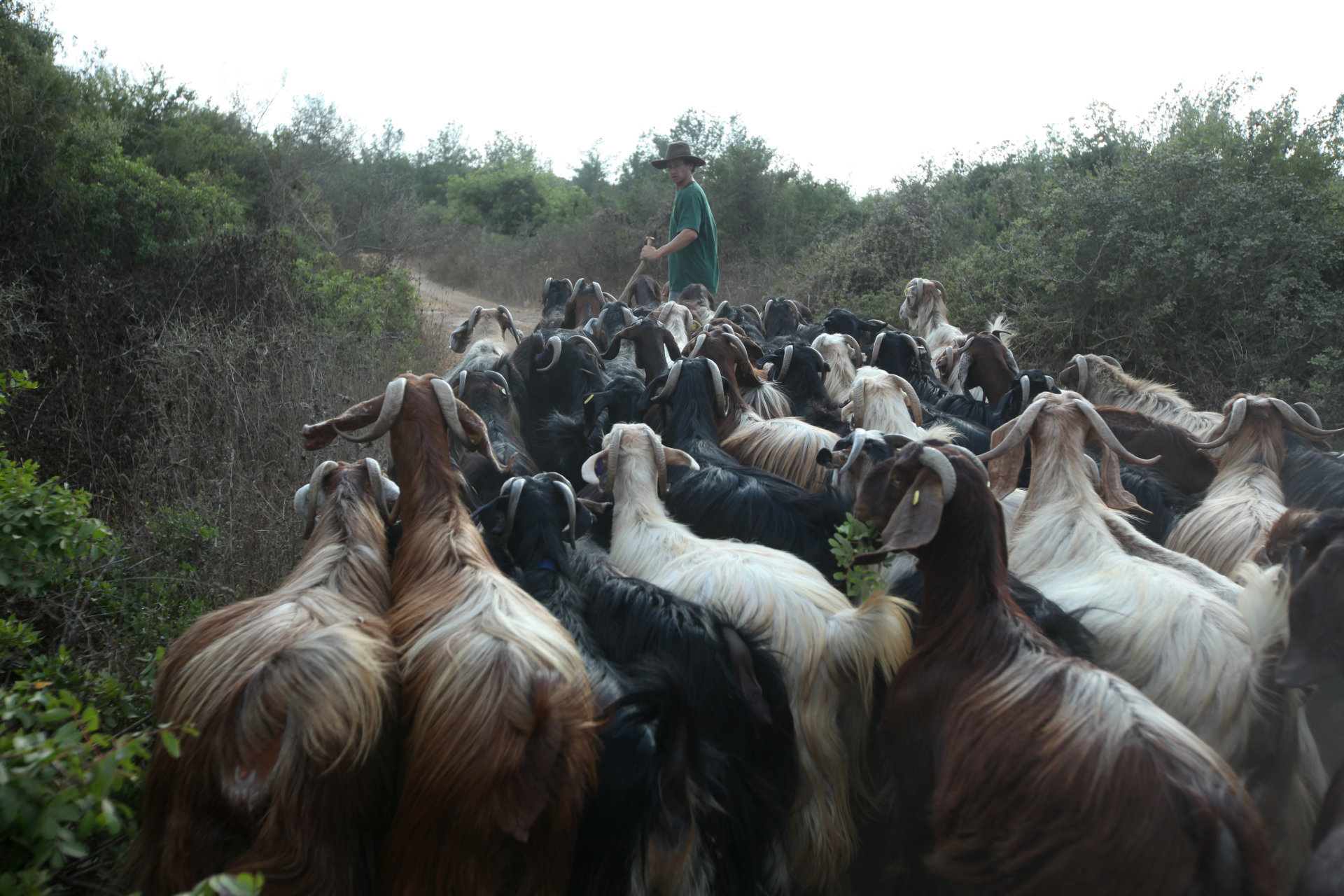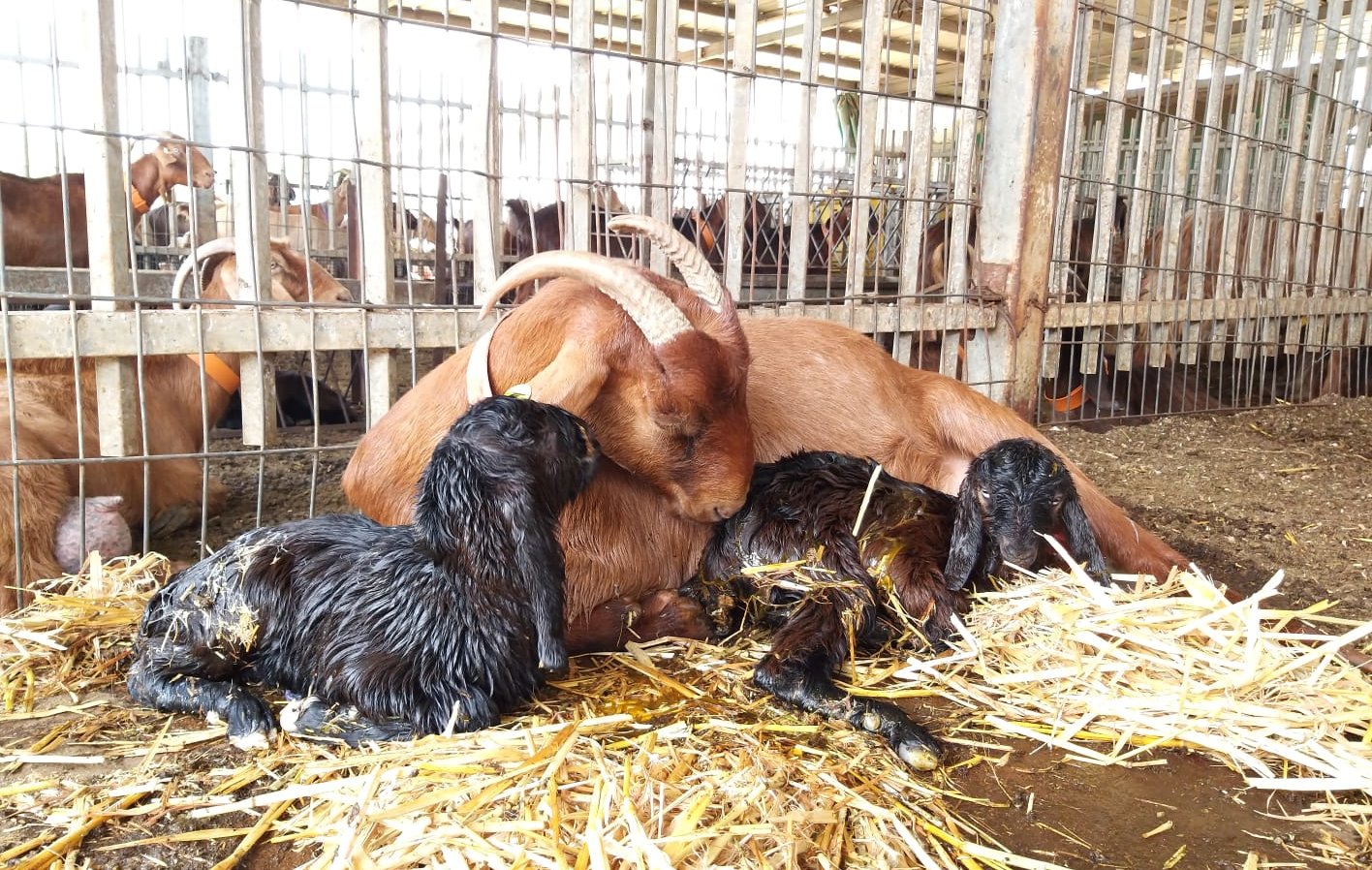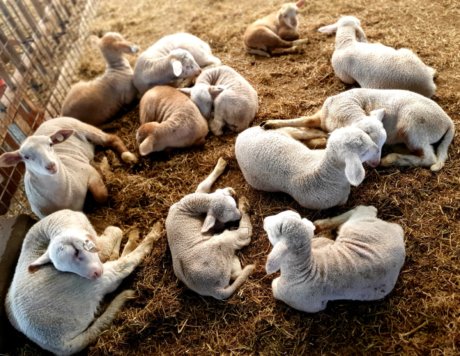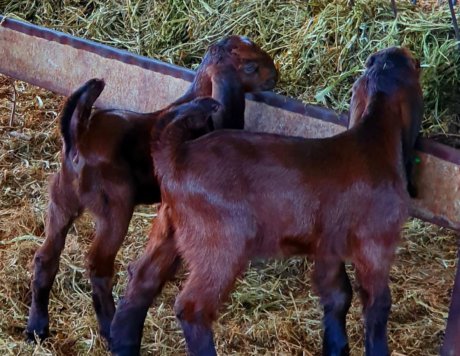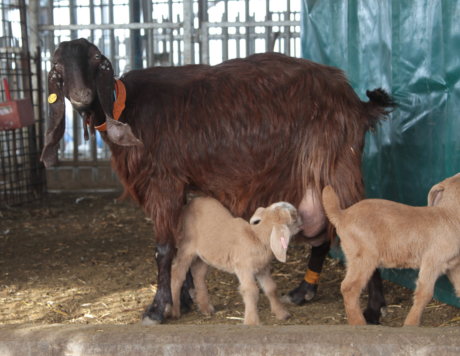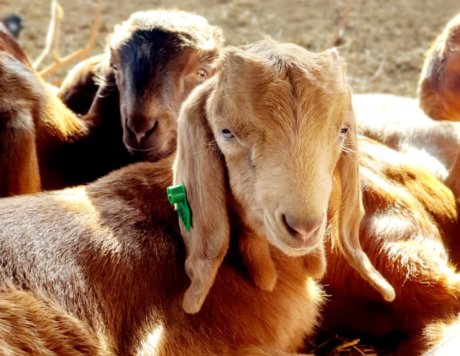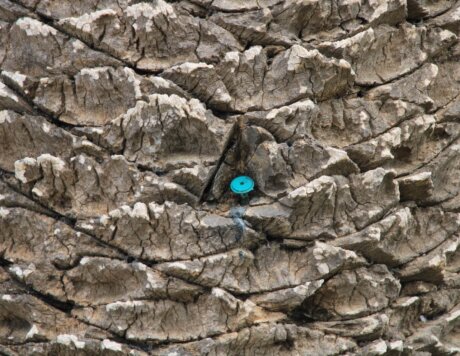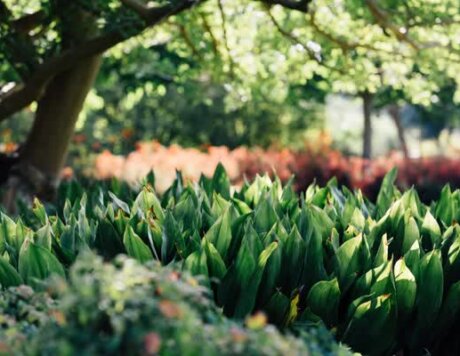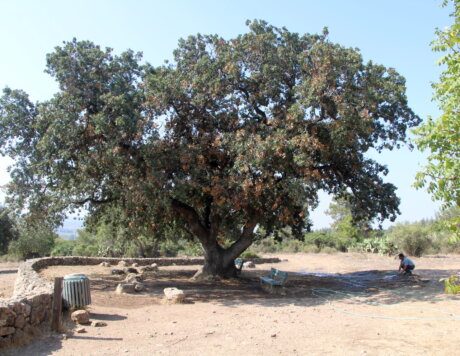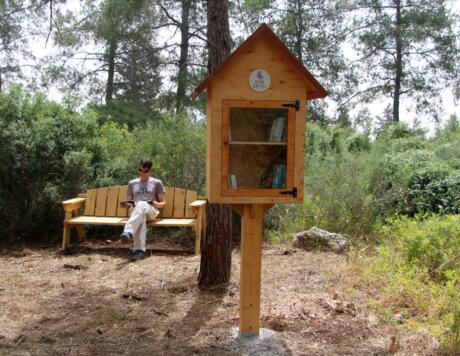The caprices of the goats
Although they live in a herd, goats are individualistic animals – each one has its own personality, or rather, caprices. It turns out that the Latin word for goat, Capra, is not coincidental! There is a range of behaviours in the pen, says Tzach: there’s the goat who wanders around after being milked, the goat that pushes, the goat that scratches, and the goat that ignores her kids, who then need to be matched up with an adoptive mother.
Yonit is the oldest goat in the pen, born in 2011. She tires easily and spends most of her time resting. Yulia is an alpine/baladi cross. Some say she is the most beautiful goat in the pen. ‘The volunteer’ – when setting out to graze, she is always first in line for the GPS device. Brownie is a 3-year-old goat that was born prematurely, and until today she is smaller than other goats her age. There are also Jumbo, Motek and many other goats, sheep, lambs and kids. You can stay in the pen for days, it’s addictive!


